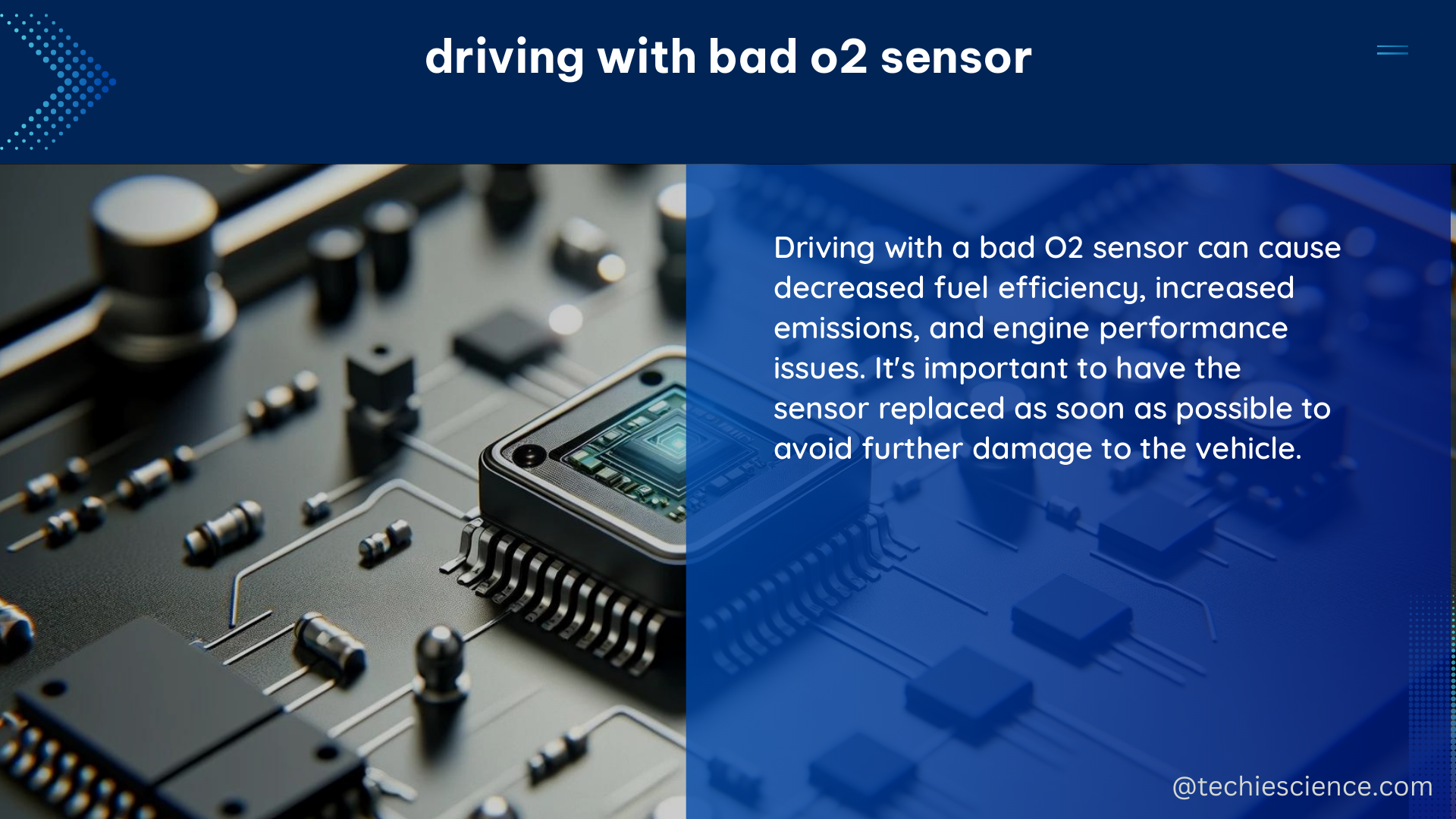Driving with a malfunctioning oxygen (O2) sensor can lead to a range of issues, including rough idling, poor acceleration, misfires, and a significant increase in fuel consumption. The O2 sensor plays a crucial role in monitoring the air-fuel ratio of the engine, and its failure can cause the power control module (PCM) to provide the engine with an incorrect amount of fuel, resulting in suboptimal engine performance.
Understanding the Role of O2 Sensors
O2 sensors are responsible for measuring the amount of oxygen present in the exhaust gases leaving the engine. This information is then relayed to the PCM, which uses it to adjust the air-fuel mixture to maintain optimal combustion efficiency. When an O2 sensor fails, the PCM may not receive accurate data, leading to an imbalance in the air-fuel ratio.
Quantifying the Impact of a Bad O2 Sensor

Driving with a faulty O2 sensor can result in a 10-20% increase in fuel consumption. This is because a malfunctioning sensor can cause the PCM to provide an overly rich air-fuel mixture, leading to unburned fuel that can overheat and damage the catalytic converter.
Identifying the Number of O2 Sensors in a Vehicle
Most late-model vehicles are equipped with at least two O2 sensors, one upstream and one downstream, for each of the engine’s cylinder banks. Engines with a ‘V’ or flat configuration have two cylinder banks, while engines with an inline or flat configuration have just one bank.
In the case of the 2006 Toyota Highlander, the vehicle has two O2 sensors, one before and one after the catalytic converter, for each of the engine’s cylinder banks. The downstream O2 sensor, also known as Bank 1, Sensor 2, is responsible for monitoring the catalytic converter’s efficiency and does not directly affect the air-fuel control for the engine. Therefore, while it is recommended to replace this sensor, it is not as urgent as replacing the faulty upstream O2 sensor that the diagnostic trouble code (DTC) indicates is the problem.
Symptoms of a Bad O2 Sensor
Driving with a malfunctioning O2 sensor can manifest in various ways, including:
- Rough Idling: The engine may experience uneven or rough idling due to the incorrect air-fuel mixture.
- Poor Acceleration: The engine may struggle to accelerate smoothly, leading to a sluggish driving experience.
- Misfires: The engine may experience misfires, which can cause the check engine light to illuminate.
- Increased Fuel Consumption: As mentioned earlier, a bad O2 sensor can result in a 10-20% increase in fuel consumption.
- Catalytic Converter Damage: A faulty O2 sensor can lead to an overly rich air-fuel mixture, which can overheat and damage the catalytic converter.
Diagnosing and Replacing a Bad O2 Sensor
To diagnose a malfunctioning O2 sensor, you can use a diagnostic tool to read the relevant diagnostic trouble codes (DTCs). These codes will provide information about the specific O2 sensor that is causing the problem, allowing you to target the replacement accordingly.
When replacing an O2 sensor, it is essential to use a high-quality, OEM-approved replacement part to ensure proper functionality and compatibility with your vehicle’s engine management system. Additionally, it is recommended to clear the DTCs and perform a test drive to verify that the new O2 sensor is functioning correctly.
Conclusion
Driving with a bad O2 sensor can have significant consequences for your vehicle’s performance, fuel efficiency, and overall health. By understanding the role of O2 sensors, the impact of a malfunctioning sensor, and the proper diagnostic and replacement procedures, you can take proactive steps to maintain your vehicle’s optimal performance and avoid costly repairs down the line.
References:
- Symptoms of a Bad O2 Sensor and Replacement Cost
- Can I Drive with a Bad O2 Sensor?
- Does It Hurt the Car to Drive with Check Engine Light/Bad O2 Sensor?
- Diagnosing and Replacing a Bad O2 Sensor
- Importance of Replacing a Bad O2 Sensor

The lambdageeks.com Core SME Team is a group of experienced subject matter experts from diverse scientific and technical fields including Physics, Chemistry, Technology,Electronics & Electrical Engineering, Automotive, Mechanical Engineering. Our team collaborates to create high-quality, well-researched articles on a wide range of science and technology topics for the lambdageeks.com website.
All Our Senior SME are having more than 7 Years of experience in the respective fields . They are either Working Industry Professionals or assocaited With different Universities. Refer Our Authors Page to get to know About our Core SMEs.